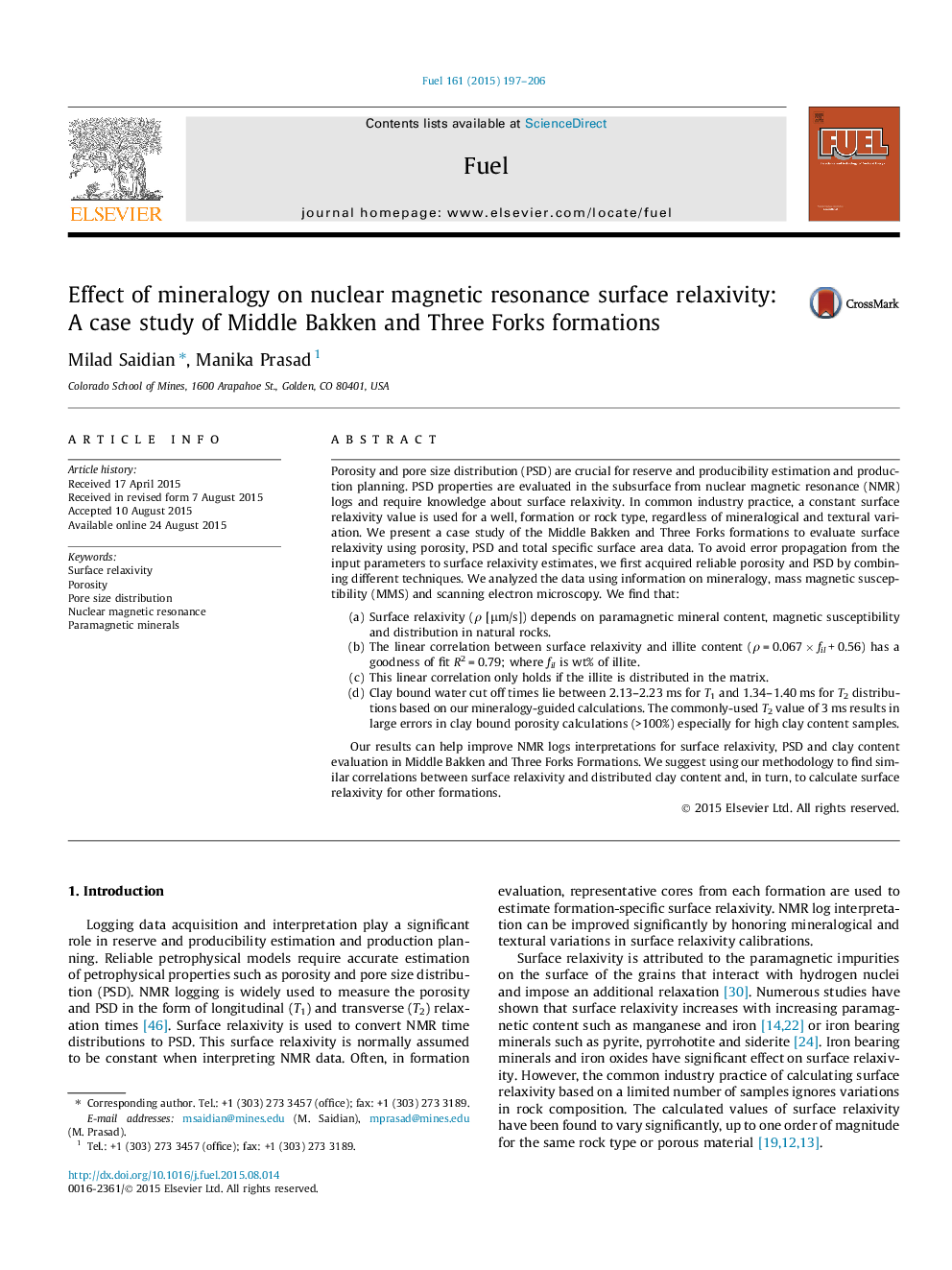| کد مقاله | کد نشریه | سال انتشار | مقاله انگلیسی | نسخه تمام متن |
|---|---|---|---|---|
| 205440 | 461109 | 2015 | 10 صفحه PDF | دانلود رایگان |
Porosity and pore size distribution (PSD) are crucial for reserve and producibility estimation and production planning. PSD properties are evaluated in the subsurface from nuclear magnetic resonance (NMR) logs and require knowledge about surface relaxivity. In common industry practice, a constant surface relaxivity value is used for a well, formation or rock type, regardless of mineralogical and textural variation. We present a case study of the Middle Bakken and Three Forks formations to evaluate surface relaxivity using porosity, PSD and total specific surface area data. To avoid error propagation from the input parameters to surface relaxivity estimates, we first acquired reliable porosity and PSD by combining different techniques. We analyzed the data using information on mineralogy, mass magnetic susceptibility (MMS) and scanning electron microscopy. We find that:(a)Surface relaxivity (ρ [μm/s]) depends on paramagnetic mineral content, magnetic susceptibility and distribution in natural rocks.(b)The linear correlation between surface relaxivity and illite content (ρ = 0.067 × fil + 0.56) has a goodness of fit R2 = 0.79; where fil is wt% of illite.(c)This linear correlation only holds if the illite is distributed in the matrix.(d)Clay bound water cut off times lie between 2.13–2.23 ms for T1 and 1.34–1.40 ms for T2 distributions based on our mineralogy-guided calculations. The commonly-used T2 value of 3 ms results in large errors in clay bound porosity calculations (>100%) especially for high clay content samples.Our results can help improve NMR logs interpretations for surface relaxivity, PSD and clay content evaluation in Middle Bakken and Three Forks Formations. We suggest using our methodology to find similar correlations between surface relaxivity and distributed clay content and, in turn, to calculate surface relaxivity for other formations.
Journal: Fuel - Volume 161, 1 December 2015, Pages 197–206
